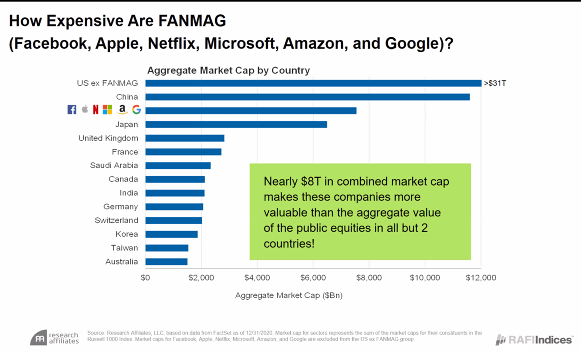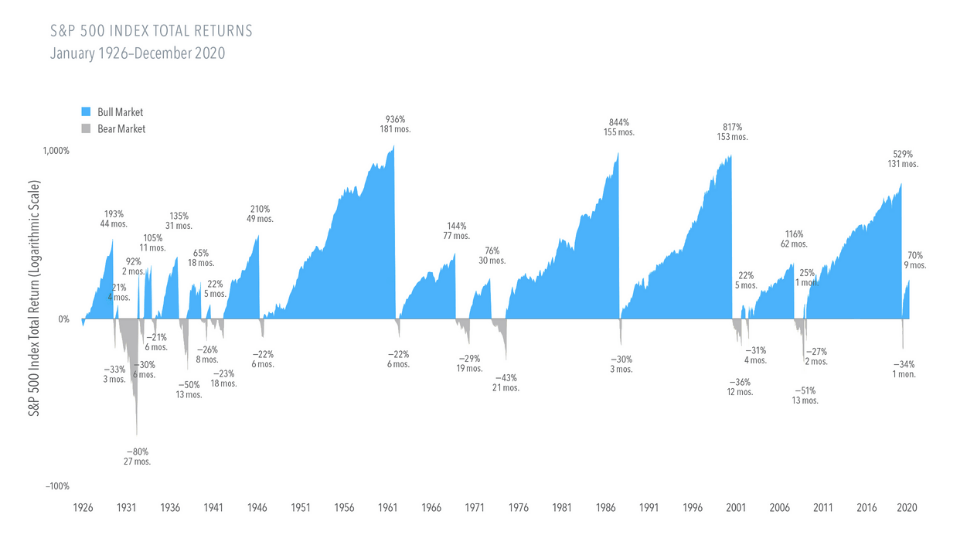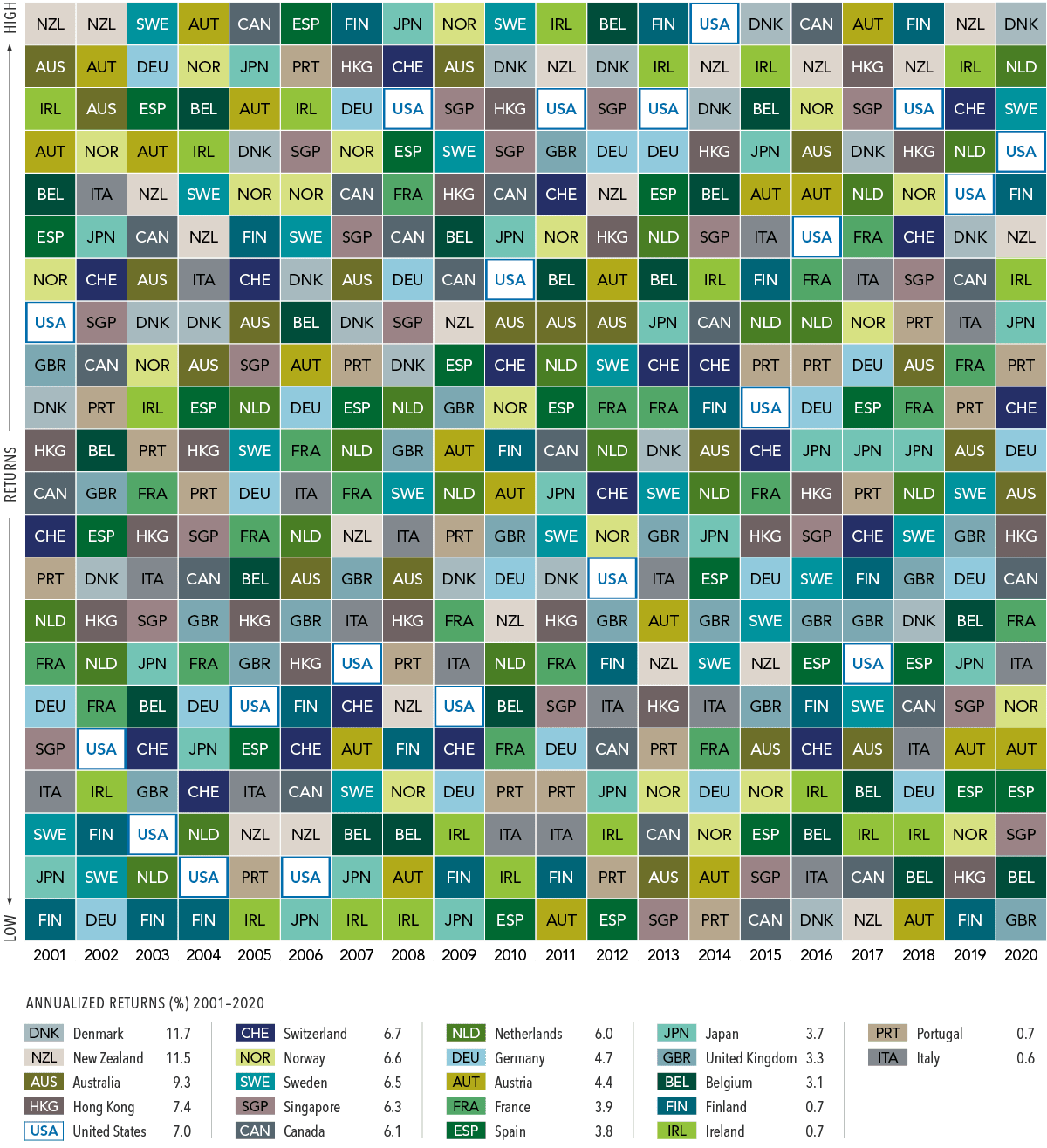The combined market caps of the six tech giants – Facebook(FB), Aaple(AAPL), Netflix(NFLX), Microsoft(MSFT), Amazon(AMZN) and Alphabet(GOOG) – are bigger than the equity market caps of many countries. In fact, according to a chart published by RAFI Indices last month, only two countries have market caps that are higher than that of the FANMAG’s market caps. These countries are the US excluding FANMAG and China.
It is indeed shocking that equity markets of countries like Germany, the UK, Canada, etc. are lower in value than these US tech champions. Germany for example is an engineering powerhouse with world-class companies including auto giants like BMW, Benz, Porsche, etc. and chemical leaders like Bayer and BASF. But the market values all these companies and others in the entire country lower than FANMAGs.
To put the numbers in perspective, at the end of August the total market cap of all German companies listed on the Frankfurt Stock Exchange was 2.23 Trillion Euros. As of market close on Friday Apple’s market cap was $2.4 Trillion.
Click to enlarge
Source: RAFI Indices via BFM
Disclosure: No Positions



